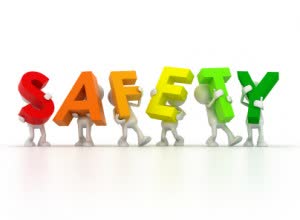Dividend Value Builder Newsletter
Margin of Safety – Chapter 20 – The Intelligent Investor Book Review
Ben Graham called margin of safety “the secret of sound investment” and “the central concept of investment”. He also devoted a whole chapter to the concept and, I am confident, placed it last because it is the most important.
Margin of safety is, as he put it, “the thread that runs through all the preceding discussion of investment policy”. They are the 3 most important words in The Intelligent Investor.
This is Part 8 of our book review of The Intelligent Investor, Revised Edition, Updated with New Commentary by Jason Zweig (affiliate link). Part 8 covers Chapter 20 – Margin of Safety as the Central Concept of Investment.
You may find the Introduction and relevant links at: The Intelligent Investor Book Review in 30 Minutes.
Exponentially Higher Returns
The margin of safety for an investment is the difference between the fundamental or intrinsic value and the price you pay. The goal of the value investor is pay less (hopefully, much less) than the real value.
The greater the margin of safety the more leeway you have for negative conditions before you lose money. On the other hand, if conditions are as you expected or better, profits are exponentially higher the greater the original margin.
Here is an example of exponentially higher returns:
Estimated Intrinsic Value $100
Purchase 20% below at $80. Sell at your estimated $100 intrinsic value = Profit of $20 ($20 / $80 = 25%)
Purchase 50% below at $50. Sell at your estimated $100 intrinsic value = Profit of $50 ($50 / $50 = 100%)
In other words your percentage profit increases exponentially as your discount (margin of safety) increases. Price Matters!
Function of Margin of Safety
Almost anyone, with a little knowledge and hard work, can analyze the past. Mr. Graham demonstrates the importance of this exercise throughout The Intelligent Investor. However, even the best analysts are unable to consistently and accurately forecast the future.
The function of having a margin of safety is to make accurate forecasts of the future unnecessary. In other words, having a safety buffer allows for inaccurate forecasts. It gives you leeway for conditions that are less than optimum because that is usually what happens.
The Price Paid
The amount of safety is completely contingent upon the price paid. Every investment (there are few exceptions) has a price where the margin of safety would be sufficient for purchase. Determining what your purchase price is, and having the discipline to only buy at or below that price, is where the difficulty rests.
There is risk in paying too high a price for a good quality investment. However, Graham noted that investors suffer more often from buying low quality investments during times of economic stability and growth.
Investors draw incorrect conclusions about the earnings and viability of a company because of a few good years. A true safety buffer requires making sufficient allowances for economic cycles and the possibility the company is not on a permanent upswing.
In addition, Graham recognized a similar folly with buying growth stocks. Investors seem to project future earnings of growth companies at rates far above average and place a high multiple (premium price) on these stocks. This leaves little room for error or changes of conditions. Growth stocks should only be bought when the price provides a margin of safety based on conservative projections.
Almost any investment has a price point at which the margin of safety is sufficient for purchase. However, these investments are usually unpopular and out of favor with market. The key is to require a safety buffer that is large enough to prevail against adverse conditions.
Diversification
Diversification is a key companion of safety. Diversification is the margin of safety for your portfolio as a whole.
First, we have put the odds heavily in our favor by requiring a margin of safety on each individual investment. However, regardless of how well we have done, some will fail to live up to our expectations. Having a safety buffer improves our probability, but some investments will still be losses.
The idea of diversification is that the combined gains will be much higher than the losses. The more opportunities we find that meet our safety requirement, the greater the probability that the portfolio will have above average gains. Therefore diversification is an important part of intelligent investing.
Your passion has probably increased to learn more from the father of value investing. I highly recommend owning a copy of The Intelligent Investor. I encourage you to highlight and underline as you read. There is so much wisdom and practical application — my collectors edition is well marked!
Related Reading:
Intrinsic Value and It’s Relationship To Margin of Safety
Intrinsic Value Stock Analysis – My Formula
Minimize Large Portfolio Drawdowns
Invest With Confidence in Less Time - Manage Your Portfolio Without Behavioral Errors

